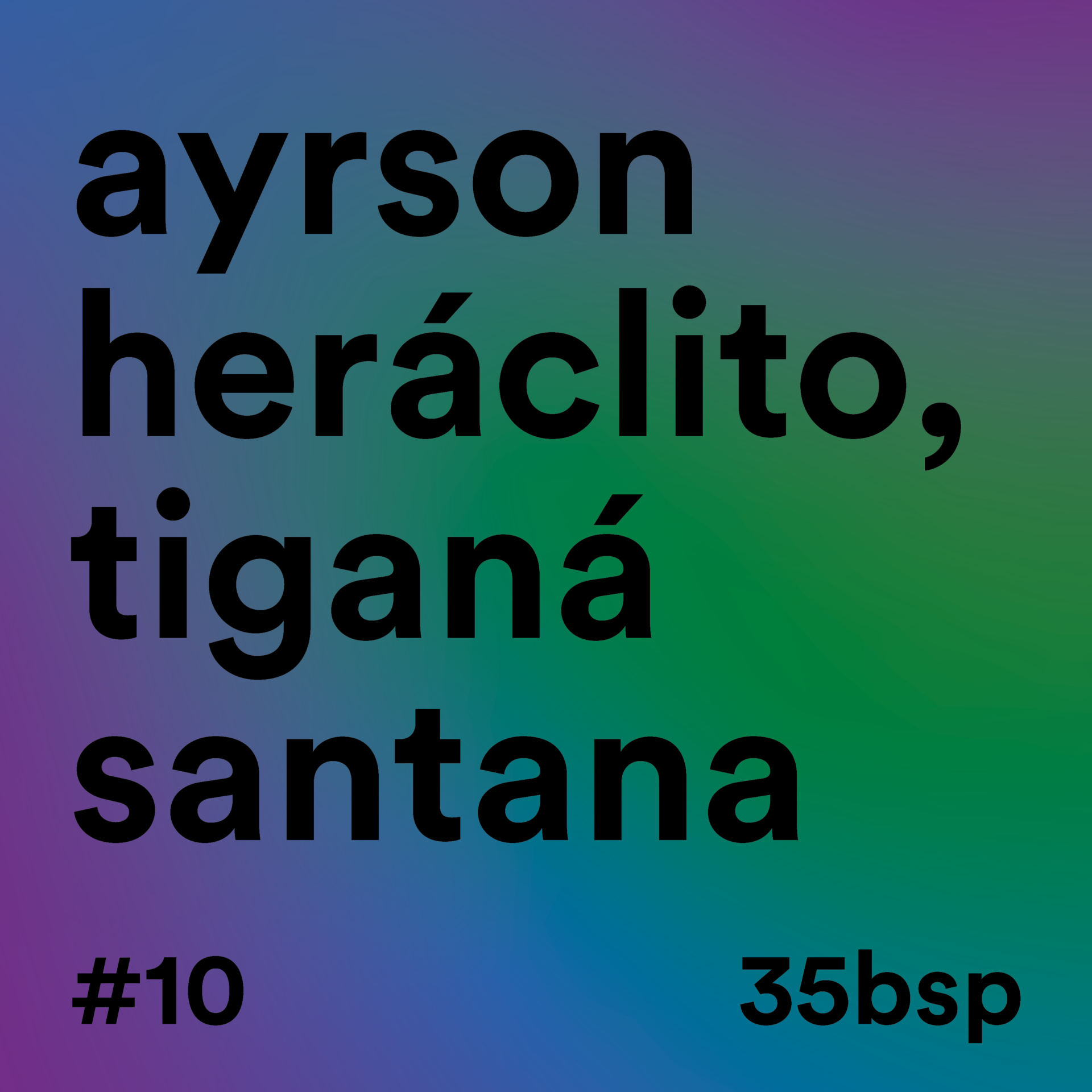
Ayrson Heráclito & Tiganá Santana
We now arrive at Floresta de infinitos [Infinities Forest], an installation by Ayrson Heráclito and Tiganá Santana.
Ayrson Heráclito was born in 1968 in Macaúbas, Bahia. He is a visual artist, researcher, curator and teacher. His work has been shown in important solo and group exhibitions, both nationally and internationally. Tiganá Santana was born in 1982 in Salvador, Bahia. He is a composer, singer and art professor at the Federal University of Bahia. He has several internationally recognized works of art, as well as research into Bantu-African thought.
As Luciana Brito says in the catalog for this exhibition, Ayrson and Tiganá are performing here “a tribute to the forest, an offering to the forces of nature, praising its energy sheltered among plants and trees, which make humanity’s existence possible”. “Installed in the center of Latin America’s largest city,” Floresta de infinitos “is a political project in defense of life and the preservation of nature, which proposes a radical break with ignorance and extermination.”
To begin our immersion, we literally entered this forest. “Agô! You ask permission to enter the sacred forest,” Brito reminds us.
The forest is in one of the rooms built for this Bienal and covers a total of 240 square meters. The whole installation is made up of many, many beige bamboos installed vertically, resting on the floor, next to each other. They vary in diameter, reaching a maximum of 20 centimeters, and are approximately four meters high. Between this bamboo forest there is a winding path, covered in brown sawdust, along which we follow our trail. Along this path, in the middle of the bamboo forest, there are speakers and screens measuring 2.5 meters by 1.4 meters, with black or transparent tulle fabric, projecting images.
Described by the artists as “our poetic dream”, Floresta de infinitos is “populated by material, inanimate or ancestral life”, as Brito describes it. The installation-forest was born as a moment of invocation and connection with African (in Brazil), Afro-Brazilian and indigenous forces and entities, especially Oxóssi/Mutalambô/Otolu; Ossayin/Katendê/Agué; and the Caboclos. These entities capillarize throughout the installation, not exactly in a particular visual representation, but in the very sense of the forest as a whole.
Alongside these entities are what the artists call “apparitions”. These are human and non-human figures, in video or animated photo, which appear on projection screens placed in specific locations in the installation. These screens are activated as we walk along the trail and pass by them, “reminding us that the new technologies are not far removed from the various black and indigenous experiences in the forests, in life and in death.”
In the foreground are human apparitions, i.e. people who are no longer biologically alive, but who activate links with the entities summoned and/or who fought to safeguard various manifestations of nature. As Heráclito and Santana propose, these human characters “have become guardians of a profound idea of forest, nature and enchantment” that this work evokes. Among them are, for example, Mãe Stela de Oxóssi, Joãozinho da Goméia, Mãe Edna, Mãe Mirinha do Portão, Dom Phillips, Bruno Pereira, Chico Mendes and the Índio do Buraco.
On another level are the apparitions known as “biomorphic spirits”, that is, entities that are extinct or have been violated by human action, such as the Doce River, the green fern, the large red-breasted bird and the white gameleira. As Heráclito and Santana tell us, “they [too] have become guardians, even of the forests to come, of their infinite possibilities, despite their finiteness”.
In a third zone of apparitions is the only biologically living entity: a brazilwood tree over 600 years old, the oldest ever identified in the country, in the Itamaraju region, in the south of Bahia.
All these appearances are ancestral and call us today to rethink our actions in order to balance our existences with what nature demands.
Finally, one last dimension of this forest-installation is the sounds and other “sound-imagetic enchantments”, as described by the artists.
The different layers and textures of sound make it possible to experience a three-dimensional immersion. Between the melodies created and the sounds captured on some trips, perhaps we can feel the “breath” of the forest at different times of the day, the intermittent sounds of living beings, winds, trees and rain. What else do you hear and feel?
“Agô, [now] it’s time to leave the forest”, as Brito says. “Let’s let the forest return to its mysterious silence, with its enchantments, rivers and infinite life forms. […]. With regard to the human visit, they wonder: will they learn that all life is sacred?”

 Português
Português